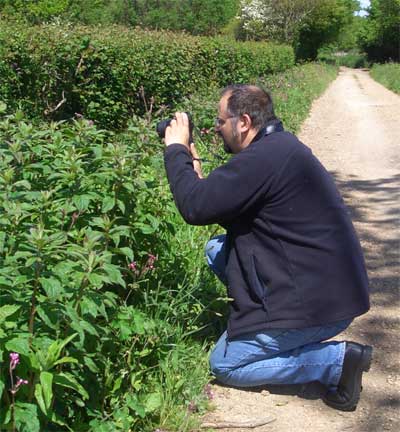Hedgerow protection: a gap in the system
- Complaining about the Mainland - 17th August, 2024
- New island designation – is it just greenwash? - 26th April, 2024
- Police and Crime Commissioners – a solution or a problem? - 21st April, 2024
A recent discussion on the UK Tree Care mailing list explored the question of the amount of protection afforded hedgerows by the legislation in England and Wales.

It’s a widely misunderstood subject – and a quick surf around the web will show you that even those you might expect to know really don’t – for example, the Friends of the Earth website says:
…the removal of any hedge longer then 20 metres, requires planning permission. If the hedge is shown to be significant in terms of its age, environmental or historical importance, then the planning authority can refuse such permission and take further measures to protect the hedgerow.
There’s one mistake and a few understatements in this analysis, but they are typical misconceptions. The mistake: the hedgerow regulations are nothing to do with planning permission. The understatements: the establishment of the ‘importance’ of a hedge is very complex, and there is little if any discretion in the process. And even if that is successful, the ‘further measures to protect the hedgerow’ amount to very little. When the Ranger was working with protected trees he dealt with a constant stream of enquiries from people wanting to protect hedges in some way. Almost all were disappointed. It is often imagined that the Hedgerow Regulations 1997 are some sort of Tree Preservation Order (TPO) for hedges – they are not. Key differences are that whilst any tree can (in theory) be protected by a TPO, only certain very closely prescribed hedge types can qualify as ‘important hedges’, and almost all of these will be rural or agricultural hedges, well away from the urban and suburban areas where most TPOs are found, and where hedge-related conflicts usually break out. Furthermore there is no facility to proactively designate hedges as ‘important’, this can only be done in response to a notification from a landowner. Failing such a notification the potential for action in the case of a removed hedge is pretty minimal. Finally there is only really a prohibition of removal, not any lesser works. Works up to and including the ground-level coppicing of an entire hedge would not fall within the regulations in most cases. Data reported by Alina Congreve suggests that “All the criteria combined only protect about 20% of hedgerows from removal.” That’s not many. She also points out many other problems with the hedgerow regulations, and suggests that by widening the scope of the regs this could to some extent be addressed. The Ranger has come to believe that there is a gap in the protection regime that allows most hedgerows to remain in effect unprotected. This gap is not much understood as most people seem to assume that the Hedgerow Regulations cover it. This has arisen because the original Hedgerow Regs were rightly aimed at agricultural hedge removal, whereas today the issues concerning hedge removal are much more likely to be concerned with development and gardens, where the regulations do not apply and the issues are quite different. He takes a more pessimistic view than Dr Congreve because of the qualitative issues that arise once non-rural hedges are considered. The problems with the Hedgerow Regulations in non-rural situations are serious enough that a more radical approach is required. Instead of widening the scope of the Hedgerow Regulations it may be more appropriate to introduce a new category of Tree Preservation Order, complete with the existing constraints and controls that system already carries. TPOs are primarily intended for domestic, not agricultural environments. Such a new category could be applied specifically to hedgerows in any location, for the purpose of protecting their public amenity as opposed to simply evaluating their intrinsic importance.

Possibly – although I think that any incompatibility would be cancelled out by the system. As it is many of the candidate ‘nuisance’ hedges probably already count as trees capable of being TPOd at a pinch. And, under my proposal, if the trees are causing a nuisance, not only would the local authority have a chance to see that at the time it made the TPO, but any neighbour who wished to object would have a chance to do so at the same time. And believe me, they’d object. Oh yes. And finally, in the unlikely case of a TPOd hedge being made the subject of a remedial notice, that is then a statutory requirement which over-rides any TPO protection.
Although there will be many people who would like to see urban and domestic hedgerows given the same opportunities for protection as trees, could it be that the High Hedges Regulations will offer some legislative conflict?